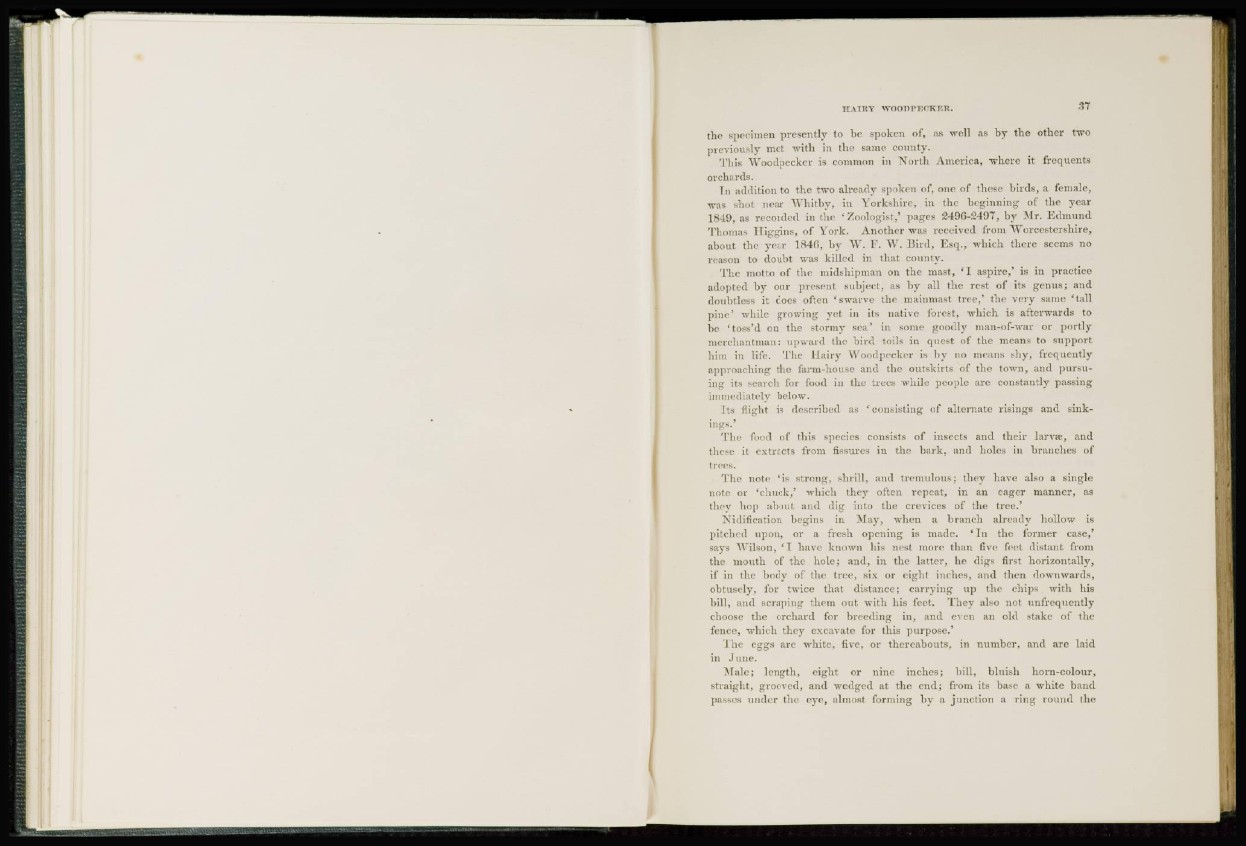
the specimen presently to be spoken of, as well as by the other two
previously met with in the same county.
This Woodpecker is common in North America, where it frequents
orchards.
Tn addition to the two already spoken of, one of these birds, a female,
was shot near Whitby, in Yorkshire, in the beginning of the year
1849, as recorded in the 'Zoologist/ pages 2496-2497, by Mr. Edmund
Thomas Higgins, of York. Another was received from Worcestershire,
about the year 1846, by W. F. W. Bird, Esq., which there seems no
reason to doubt was killed in that county.
The motto of the midshipman on the mast, ' I aspire/ is in practice
adopted by our present subject, as by all the rest of its genus; and
doubtless it does often 1 swarve the mainmast tree/ the very same 'tall
pine' while growing yet in its native forest, which is afterwards to
he ' toss'd on the stormy sea' in some goodly man-of-war or portly
merchantman: upward the bird toils in quest of the means to support
him in life. The Hairy Woodpecker is by no means shy, frequently
approaching the farm-house and the outskirts of the town, and pursuing
its search for food in the trees while people are constantly passing
immediately below.
Its flight is described as 'consisting of alternate risings and sinkings.'
The food of this species consists of insects and their larva?, and
these it extracts from fissures in the bark, and holes in brandies of
trees.
The note 'is strong, shrill, and tremulous; they have also a single
note or 'chuck/ which they often repeat, in an eager manner, as
they hop about and dig into the crevices of the tree.'
Nidification begins in May, when a branch already hollow is
pitched upon, or a fresh opening is made. 'In the former case/
says Wilson, ' I have known his nest more than five feet distant from
the mouth of the hole; and, in the latter, he digs first horizontally,
if in the body of the tree, six or eight inches, and then downwards,
obtusely, for twice that distance; carrying up the chips with his
bill, and scraping them out with his feet. They also not unfrequently
choose the orchard for breeding in, and en an old stake of the
fence, which they excavate for this purpose/
The eggs are white, five, or thereabouts, in number, and nrc laid
in June.
Male; length, eight or nine inches; bill, bluish horn-colour,
straight, grooved, and wedged at the end; from its base a white band
passes under the eye, almost forming by a junction a ring round the